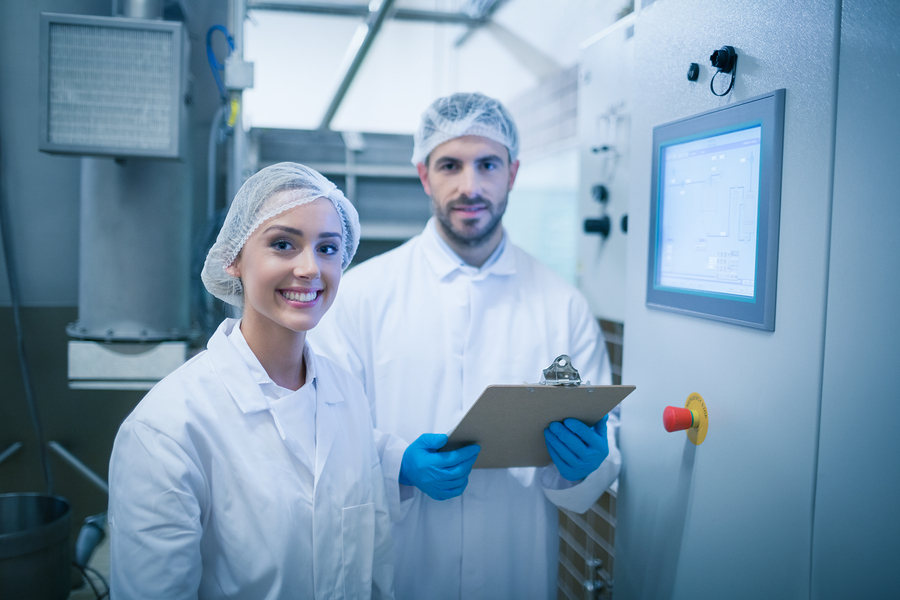It may feel easier to pick up the pieces once a problem has broken to the surface, but to stay in compliance with FSMA, food companies must anticipate their risks.
As with most preventative approaches, it’s difficult to know what you don’t know. We asked executives in the food and manufacturing industries to give us their perspectives on the most pressing — and most overlooked — safety challenges the food industry faces today.
Counterfeit products
Erwan LeRoy, VP and General Manager of Smart Sensors for Thinfilm, points out that “some 30% of the alcohol consumed globally is reckoned to be counterfeit and potentially dangerous,” this according to the International Center for Alcohol Policies.
As long as counterfeit products go undetected, it makes sense that they’ll continue to compromise the industry. According to LeRoy, “Counterfeiters typically use substandard manufacturing facilities with poor quality-control procedures, which can lead to high bacteria contamination levels.”
Reliable energy
Another significant challenge, according to CEO Darren Jamison of Capstone Turbines, involves “ensuring that local electrical grid power is reliable enough to allow the smooth operation of [your] facility.”
Frequent utility power failures can compromise perishable product temperatures and other safety measures that depend on electricity, such as data monitoring or collection systems. Interior facility temperature in regions with extremely hot and/or cold climates require energy systems to maintain constant temperatures where vulnerable items are prepared or stored.
Temperature monitoring
Temperature non-uniformities and lack of monitoring are frequent in food processing, says LeRoy. Especially in transit, the temperature in different locations of a truck can vary greatly based on the location of a truck’s airflow and refrigeration systems.
Weather presents a common problem as well. The simple angle of the sun hitting different sides of a truck can cause temperature fluctuations within a single shipment. Moving from the truck to the palette, the temperature of a product at the center can differ from that at the edge, depending on the product’s thermal mass or shape. Temperatures in this phase are unpredictable and difficult to control without the help of expensive data loggers or less reliable chemical indicators.
Transition times
According to LeRoy, the longer food sits in transition, the more likely temperature excursions are to occur. Food that is left on a dock too long or subject to frequent temperature fluctuations from the opening and closing of truck doors is a typical problem that’s often ignored.
The “last mile” from distribution to retail is typically not monitored as closely as is the producer-to-distribution segment of the food’s journey, and transportation equipment is often of lower quality.
Pathogen contamination
Few manufacturers are currently overlooking the risk of pathogen contamination. Still, it can be difficult to know how to address this challenge until after it has left its mark.
The CDC reports that approximately 48 million people fall ill with 128,000 requiring hospitalization and 3,000 individuals dying each year. According to the World Health Organization, disease associated with diarrhea is still in the top ten worldwide causes of death, with the majority of those deaths attributed to food and water contamination.
If temperatures were reduced by just 4 degrees Celsius, LeRoy says, these risks would be 1000 times lower.
How should food processors prioritize?
A report from Allied Market Research forecasts a tripling in spending in the anti-counterfeiting sector by the year 2020, as manufacturers scramble to keep track of their supplies in an increasingly globalized and fragmented market.
Industry professionals may feel pressured to choose between safety and efficiency, says Ted Curry, Senior Transformation Consultant for Myrtle Consulting Group. “Yet the trade-off between food safety and production uptime is a false choice.” Curry says teams must first prioritize doing the ‘right thing’ and then doing ‘things the right way’ by reducing waste and establishing efficiency.
RF-based labels and temperature smart labels like the kind Thinfilm specializes in may monitor tampering and shipment temperatures better than more expensive data loggers without as much damage or distortion of packaging.
First, says LeRoy, focus on adding more temperature labels to secondary and tertiary packaging to monitor shipments in a greater number of places – between boxes, outside a palette, inside a secondary package, etc. Then progress to primary packaging.
To boost prevention measures within factory walls, you might consider installing a combined cooling, heat, and power (CCHP) plant to reduce energy costs and reliance on erratic, local grid power. Microturbines like those from Capstone can be used to anchor a plant’s power system in a configuration that provides reliable electricity, heat, and cooling to the facility, boosting energy efficiency by a significant percentage.
Guilty until proven innocent
Perhaps the most overlooked obstacle is presuming innocence, says Jonathan Phillips, CEO of food safety and traceability tech leader Ten Ag Tech. “Almost everybody assumes they are in compliance, and this is at the fundamental root of almost all problems.”
To truly anticipate gaps or breaches of safety, you need to understand the nature of the threats and put the smartest, most cost-effective measures in place to prevent them.

